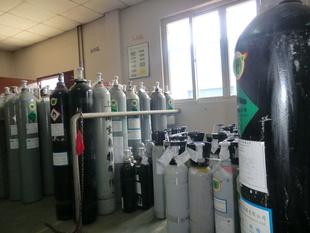Laser welding machine、 gas are Gaining momentum
Shortly before this, OESHOW published the "domestic and foreign laser listed company financial analysis", the global leading manufacturer of fiber laser IPG's financial results show that by cutting and welding and other application areas of the strong drive, IPG company's high power laser sales increased by 57%; Quasi-continuous (QCW) laser sales increased 82% year-over-year thanks to growth in consumer electronics production and applications such as percussive drilling. The growth was particularly strong in China, where it nearly doubled and accounted for half of IPG's total revenue of $369.4 million in the second quarter.
Therefore, whether it is experts' predictions or real financial data, the application of fiber laser welding is poised to take off.
Excimer Laser gas
Optional light source in China welding market
At present, the laser sources available on the market mainly include fiber lasers, pulsed Nd:YAG lasers, diode lasers, disc lasers and CO2 lasers.
CO2 laser: wavelength of 1064 nm, power 1~20 kW, is a very mature laser, and is the most important laser source of high-power processing since the 1980s.
Fiber laser: is actually a small core diameter silicon based fiber. The laser source is present in the optical fiber, so no correction is required, and the focal size can be as small as 10 μm when the small-core fiber is mapped to the focusing mirror. Such compact lasers are typically available in two configurations: a single mode for low-power welding (less than 300 W), and a multi-mode for high-power welding.
Diode lasers: The increased power of single-emitting devices, the emergence of new cooling channel technologies, and the development of micro-optical components that can focus beams into fibers less than 1000 μm in diameter have all promoted the emergence of diode as a direct-soldering laser.
Disk Laser: Flat Yd:YAG crystal thin disk is placed in the center of the CW laser -- The Disk Laser is designed to avoid the problems inherent in rod-shaped lasers by using a 0.01 in. thick disk supported by a cooling device on the other side. Using this design for cooling, the laser power can reach 10 kW, and the beam quality can be guaranteed.
Pulsed Nd:YAG laser: This laser uses a single Nd:YAG laser rod excited by a flash to produce peak values and low average power used in welding. For example, a relatively low power, 35 W average power can produce a peak power of 6 kW.
This combination of peak power and narrow pulse width not only ensures the quality of material welding, but also provides effective control of energy input.





 Facebook
Facebook YouTube
YouTube LinkedIn
LinkedIn Twitter
Twitter